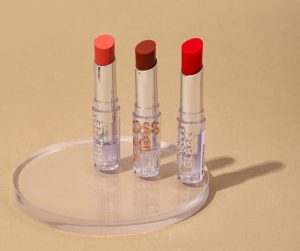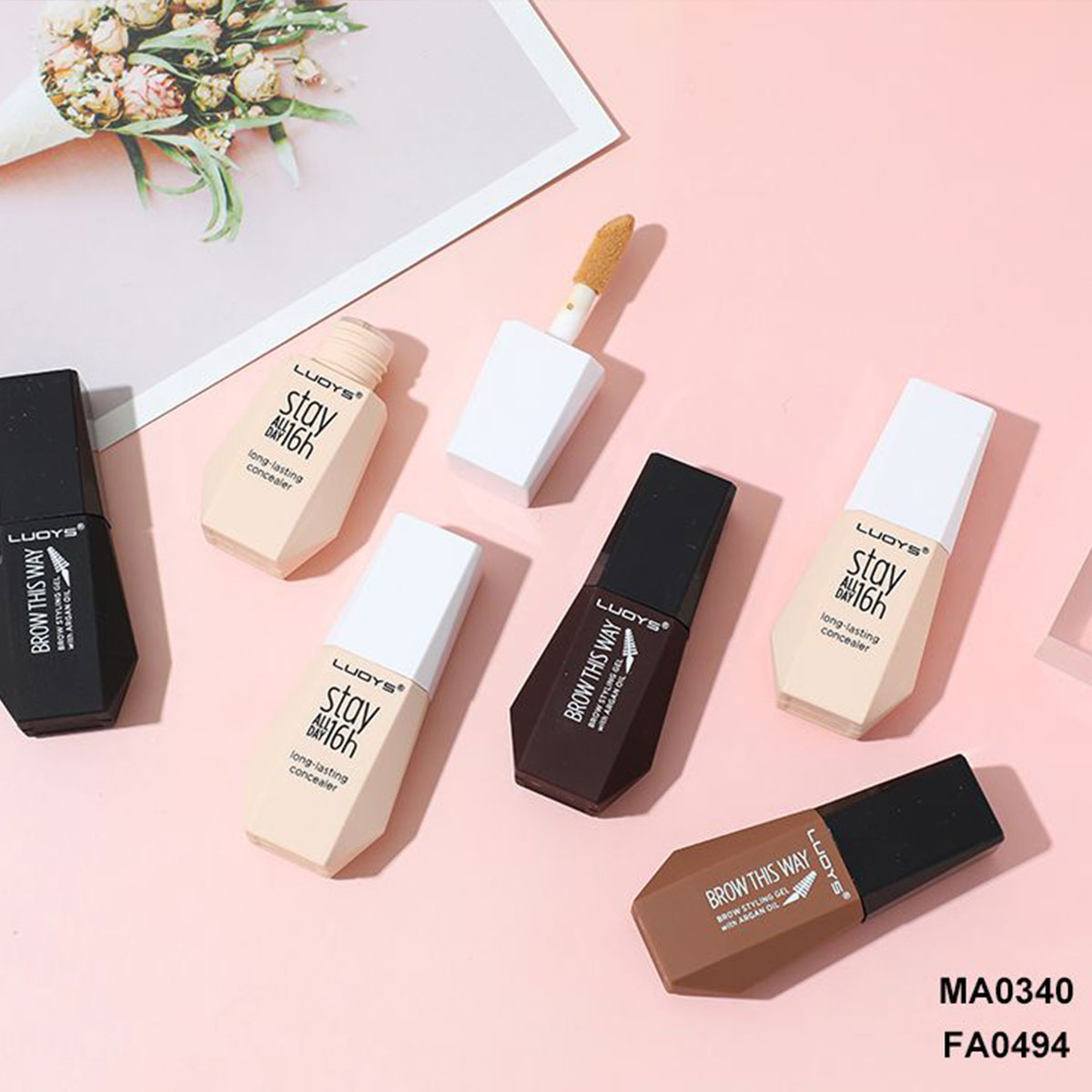The History of Red Lipstick: From Ancient Rituals to Modern Beauty Icons
![]()
Red lipstick is more than just a splash of color. It’s a vibe, a tradition, a way to stand out. For ages, it’s been a go-to for expressing power, charm, and individuality. From dusty powders in ancient times to the sleek tubes we grab today, the story of red lipstick is packed with culture, craft, and personality. Let’s take a stroll through its colorful past and see how it became a forever favorite, while giving a nod to the artistry behind this beauty must-have.
Ancient Beginnings: Red Lipstick as Ritual and Status
Way back, before lipstick even had a name, people were jazzing up their lips with red. Around 3500 BCE in Mesopotamia, women crushed gemstones like red carnelian into fine powders. They dabbed it on their lips. It wasn’t just about looking pretty. It screamed wealth and high status. In ancient Egypt, Cleopatra had her own trick. She smashed carmine beetles to whip up a bright red paste. Her red lips shouted power and a touch of something sacred. Red lips were a big deal, saved for queens or holy ceremonies.
By 1500 BCE, red lip color was catching on elsewhere. In China, court ladies used vermilion, a sketchy mercury-based pigment, to tint their lips. It was gorgeous but risky. The Greeks thought red lips were fancy, but only for the “right” crowd. Regular folks using it got some serious shade. Those early lip colors were no picnic to use—think gooey beeswax, dicey minerals, or plant dyes that stuck around for days. Still, red lips had a pull that crossed borders and kept people coming back.
The Middle Ages to Renaissance: A Tug-of-War with Morality
Fast forward to medieval Europe, and red lipstick hit a rough spot. The Church wasn’t having it. They called bright lips wicked, tying them to vanity or even witchcraft. But some noblewomen didn’t care. They secretly rubbed on berry juices or soft balms to get that red glow. By the Renaissance, red lipstick made a comeback. Queen Elizabeth I in England owned the look. Her pale skin and bright red lips popped. She used cochineal insects mixed with wax for the color. It was a gutsy move when everyone preached “natural” beauty.
Not everyone was on board, though. Some guys griped that lip color was sneaky, hiding a woman’s real face. (Sound like today’s makeup arguments? Yeah, history’s got a way of looping.) Even so, the upper crust kept the trend alive. Red lips were a subtle way to flip the bird at strict rules.
The 19th Century: Red Lipstick Goes Underground, Then Glam
In the 1800s, red lipstick was a hot topic. Victorian England labeled it cheap, fit only for actresses or women society cast out. But women weren’t about to give up. They cooked up their own lip stains at home, using crushed petals or even a splash of red wine. Over in America, women got creative too. They pinched or bit their lips for a quick flush when makeup was a no-go.
Things started to shift late in the century. Store-bought cosmetics began showing up. A French company dropped one of the first stick lipsticks in 1884, made with castor oil and wax. All of a sudden, red lipstick was easier to grab. It was handy and less of a scandal. It still had that rebel edge, perfect for women itching to break free from society’s tight leash.
The 20th Century: Red Lipstick Becomes a Cultural Icon
The 1900s were when red lipstick really hit its groove. Women fighting for the vote rocked it with pride. It was a loud badge of independence. By the 1920s, flappers were all about it. They paired bright red lips with cropped hair and short skirts. Hollywood cranked up the heat. Silent film star Clara Bow’s red lips had fans losing it. Red lipstick wasn’t just makeup—it was a ticket to freedom.
World War II gave red lipstick a new role. With supplies tight, women still painted their lips. It boosted their spirits, a tiny act of defiance. Factories kept churning out lipstick, calling it a must for keeping people’s morale up. After the war, the 1950s brought Marilyn Monroe’s dazzling red lips. They sealed the shade as a symbol of glamour. The 1960s and 70s kept the ball rolling. Red lips went flat for mod looks and shiny for disco nights.
By the 1980s and 90s, red lipstick was a power move. Picture Madonna’s fiery red pout or women in sharp suits with bold lips. By 1990, the global cosmetics market was worth over $20 billion. Red shades were the heavy hitters. Red lipstick wasn’t just a passing fad—it was a cultural giant.
Here’s why red lipstick owned the 20th century:
It screamed independence for women breaking barriers.
It became a Hollywood staple, from silent films to blockbuster stars.
It adapted to every era, from matte to glossy finishes.
It carried emotional weight, lifting spirits in tough times.
The Modern Era: Red Lipstick as Art and Identity
These days, red lipstick is everywhere you look. It’s on runways, in video chats, at the corner café. It works for any skin tone, any mood, any day. Makeup artists have a playground of options: creamy textures, long-wear mattes, glossy stains. Social media keeps the fire burning. Instagram tutorials flaunt perfect red lips. TikTok challenges dare folks to try bold shades. In 2024, beauty reports showed lipstick sales climbing 15%. Red shades grabbed nearly a third of the market.
Red lipstick means more than just looks. For some, it’s a tie to tradition, like the vermilion used in Asian ceremonies. For others, it’s a power boost—think activists rocking red lips at protests, channeling those early suffragettes. It’s versatile, personal, and speaks to everyone. I’ve got to say, I’m a sucker for a red lip myself. It’s like slipping on confidence for a big meeting or a night out. The real kicker? It’s not just the color. It’s the story behind every swipe.
Here’s what keeps red lipstick thriving today:
It flatters every skin tone with the right shade—cool, warm, or neutral.
It carries meaning, from tradition to rebellion.
It’s backed by modern tech, with formulas lasting up to 12 hours.
It’s a cultural staple, from ancient queens to today’s pop stars.
Limei Cosmetics: Crafting the Perfect Red Lipstick

When it comes to nailing red lipsticks, Zhejiang Limei Cosmetics Co., Ltd. is a pro. Based in Yiwu, China, they’ve been in the game since 1993. Their massive 20,000-square-meter factory hums with over 300 workers. They crank out 3 million lipstick tubes a month. Every single one meets strict EEC, FDA, and ISO22716 standards. Quality is their jam. They test every formula for safety, stability, and cleanliness before it hits production. Limei teams up with top suppliers and uses high-tech gear, like automatic production lines. This keeps their red lipsticks vibrant and dependable. Their R&D crew tweaks formulas to match what’s hot, serving big-name clients across the globe.
Conclusion
The history of red lipstick proves it’s got staying power. From ancient ceremonies to today’s catwalks, it’s been a mark of beauty, defiance, and self. Whether it’s a queen owning her throne or a woman rocking her day, red lipstick transforms. Zhejiang Limei Cosmetics carries that torch. They craft lipsticks that hit today’s high standards. That red is more than a color—it’s a statement. Each application connects you to a timeless legacy of confidence and style. You’re not just swiping on lipstick; you’re carrying forward an icon.
FAQs
Why is red lipstick seen as a timeless beauty pick?
Red lipstick never fades out. Its history shows it’s been loved across time and cultures. From Egypt’s bold stains to today’s slick formulas, it screams confidence and fits any style or moment.
How have red lipstick recipes changed over the years?
Early lipsticks used stuff like crushed bugs or wax. They were rough. Now, places like Zhejiang Limei Cosmetics whip up smoother, brighter, safer versions. These meet global rules like FDA and EEC, lasting longer and feeling great.
Does red lipstick work for all skin tones?
You bet! It’s all about picking the right shade—cool reds for bluish skin, warm reds for golden tones, neutral reds for anyone. The history of red lipstick shows it’s a shade for everyone.
Why does red lipstick feel so empowering?
Red lipstick has a past. Suffragettes wore it. Today’s activists do too. Its bright color grabs eyes. It shows guts and pushes back against norms, just like it did way back when.
How does Zhejiang Limei Cosmetics make sure their red lipsticks are top-notch?
Limei doesn’t skimp. They check every formula for safety, stability, and germs. With certifications like ISO22716 and trusted suppliers, they churn out 3 million red lipsticks a month. Each one hits global quality standards.


